Abstract
1. This study was performed to test the hypothesis that the exercise-induced increase in circulating cytokine levels is associated with muscle damage. Nine healthy young male subjects performed two high-intensity bicycle exercise trials separated by two weeks. The first trial consisted of 30 min of normal bicycle exercise (concentric exercise), whereas the second consisted of 30 min of braking with reversed revolution (eccentric exercise). The work loads were chosen to give the same increases in heart rate and catecholamine levels in the blood during each trial. 2. Significant increases (P < 0.05) in plasma concentration of creatine kinase (CK), aspartate aminotransferase and alanine aminotransferase were observed only after the eccentric exercise. Furthermore, the level of interleukin-6 (IL-6) in serum increased significantly after the eccentric exercise and was significantly correlated to CK concentration in the following days, whereas no significant changes were found after the concentric exercise. 3. The total concentration of lymphocytes increased significantly (P < 0.05) as a result of eccentric compared with concentric exercise. This was mainly due to a significantly more pronounced recruitment of natural killer (NK) cells and CD8 positive cells (CD8+ cells) during the eccentric trial. However, no significant differences between the two types of work were found in regard to the circulating concentration of monocytes. The concentration of neutrophils was only significantly increased 2 h after the concentric exercise. 4. The finding that high-intensity eccentric exercise caused a more pronounced increase in the plasma level of IL-6, compared with concentric exercise, supports the hypothesis that the post-exercise cytokine production is related to skeletal muscle damage. The fact that no differences between eccentric and concentric exercise were found in the recruitment of most blood mononuclear cell subsets to the blood supports the hypothesis that the exercise-induced increase in plasma catecholamines is a major determinant of the mobilization of these cells into the blood. However, as eccentric exercise caused a more pronounced increase in the concentration of NK cells and CD8+ cells, factors involved in muscle damage may also contribute to the recruitment of these cells.
Full text
PDF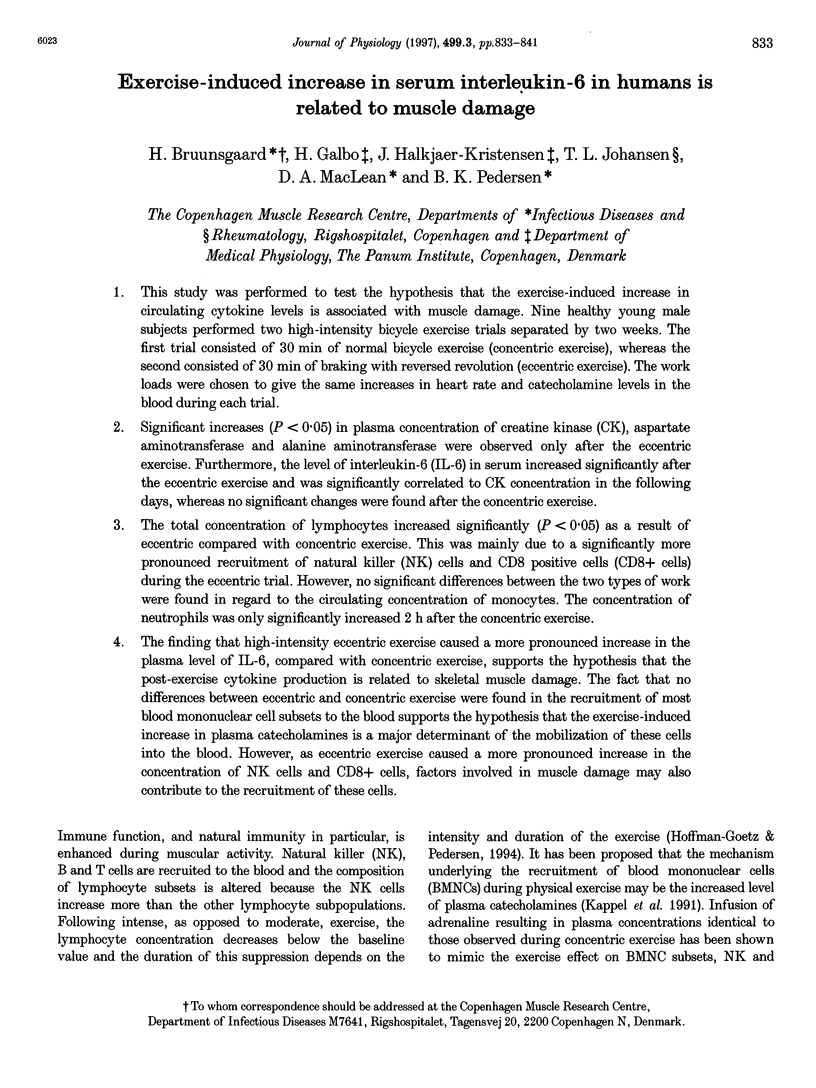
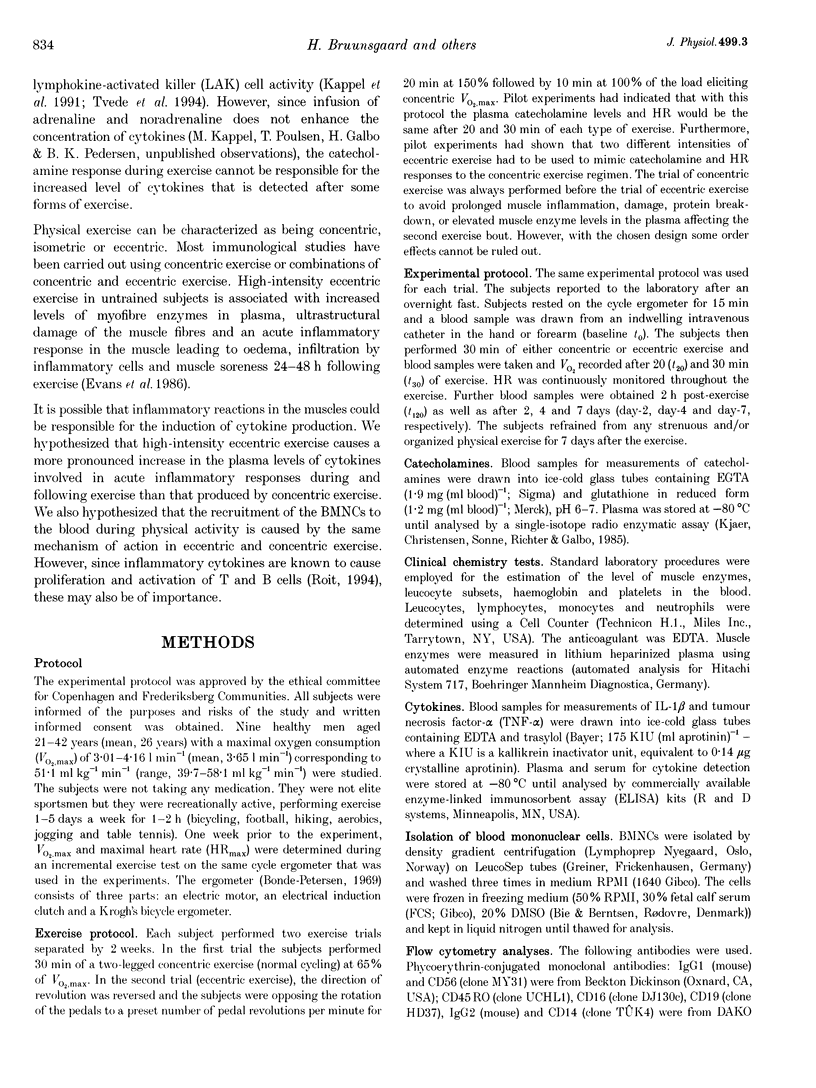
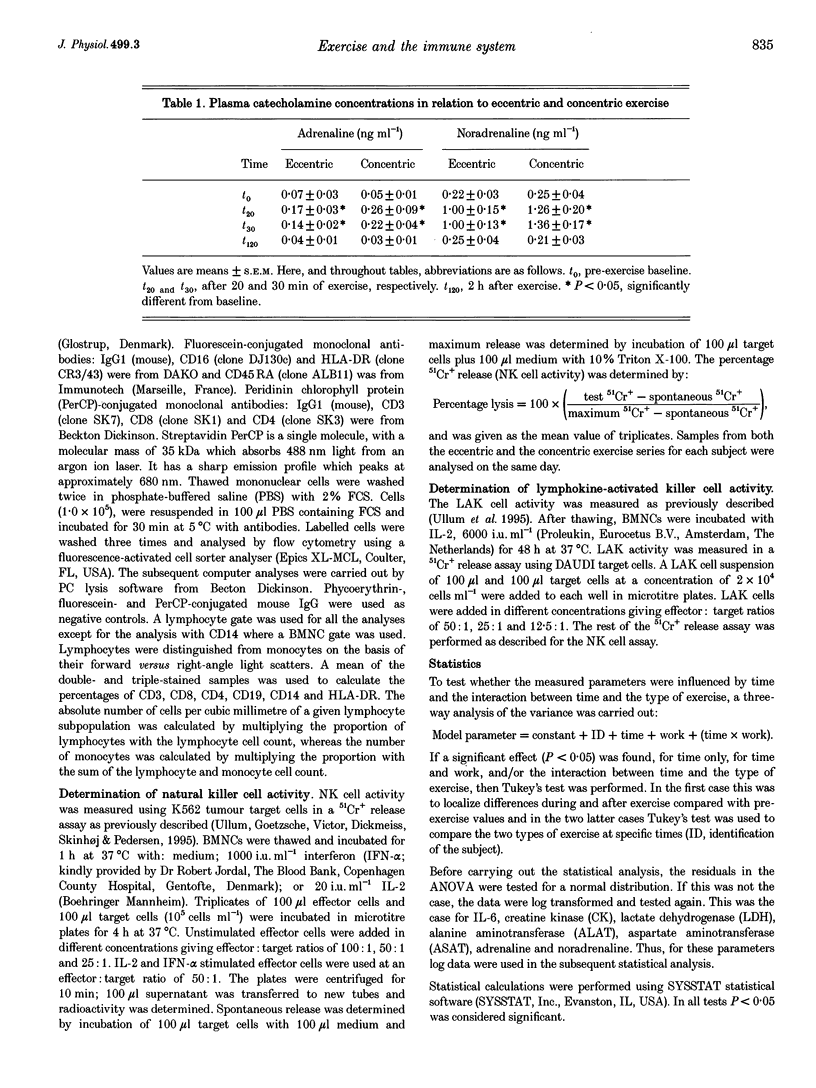
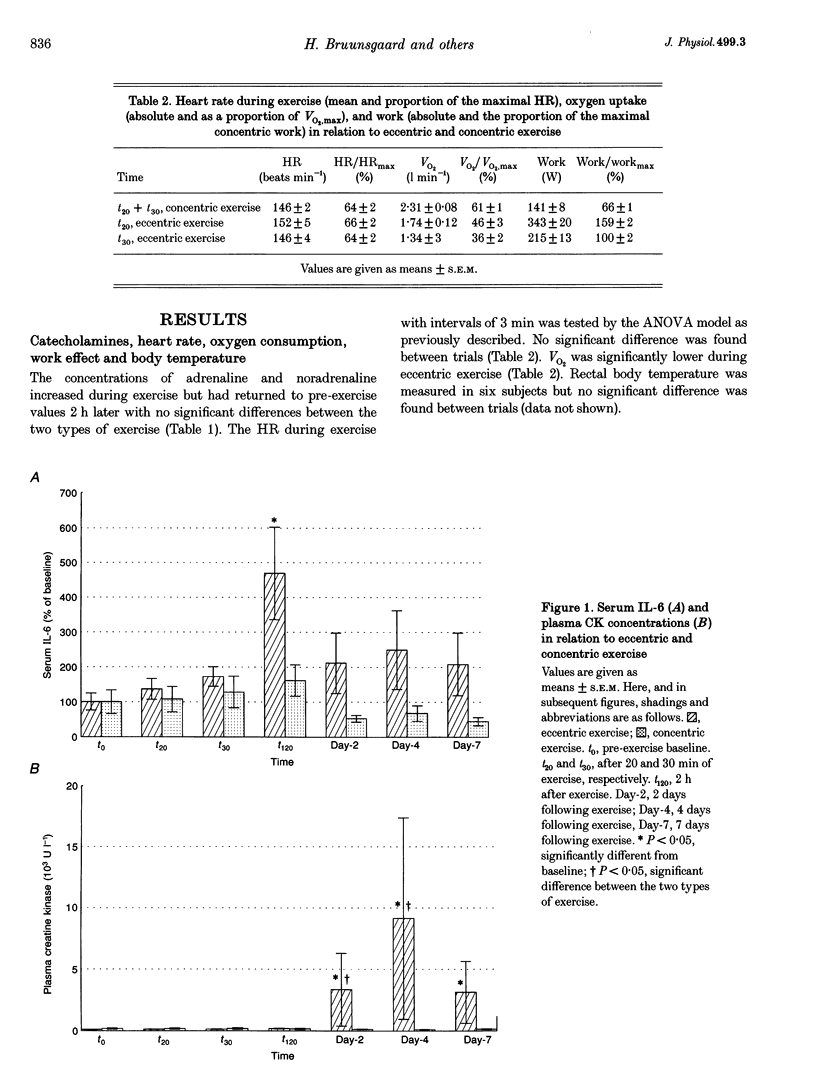

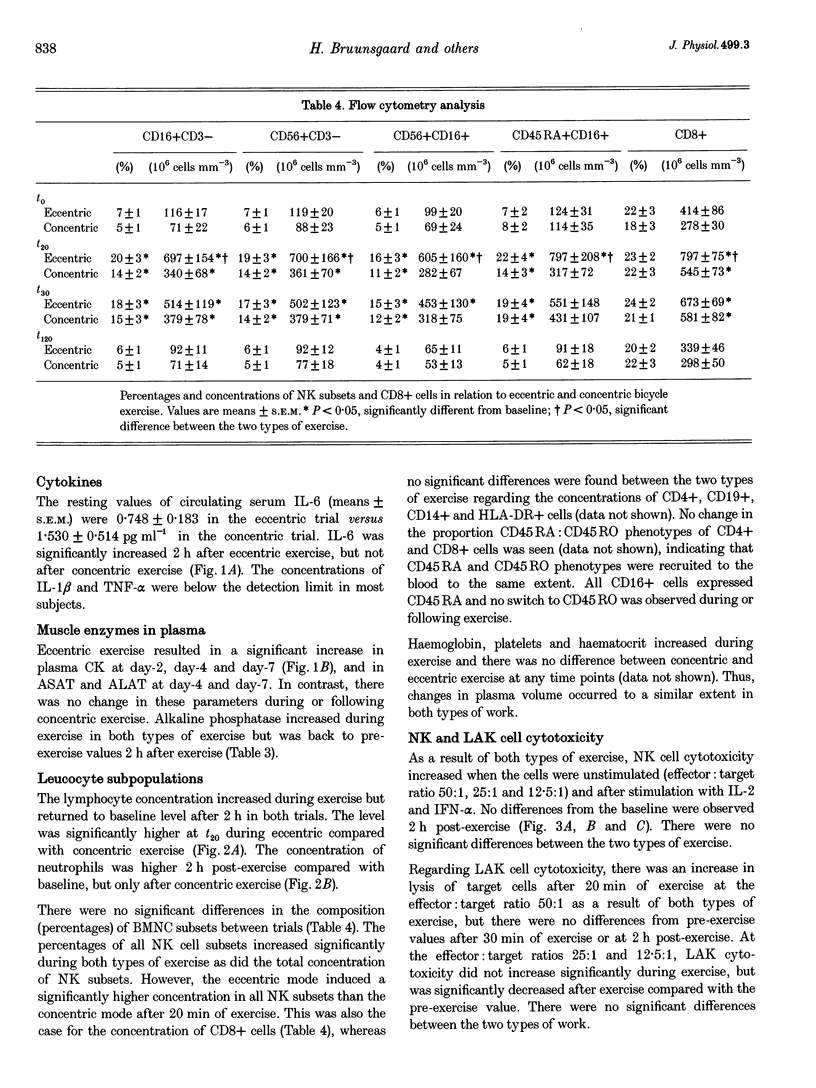
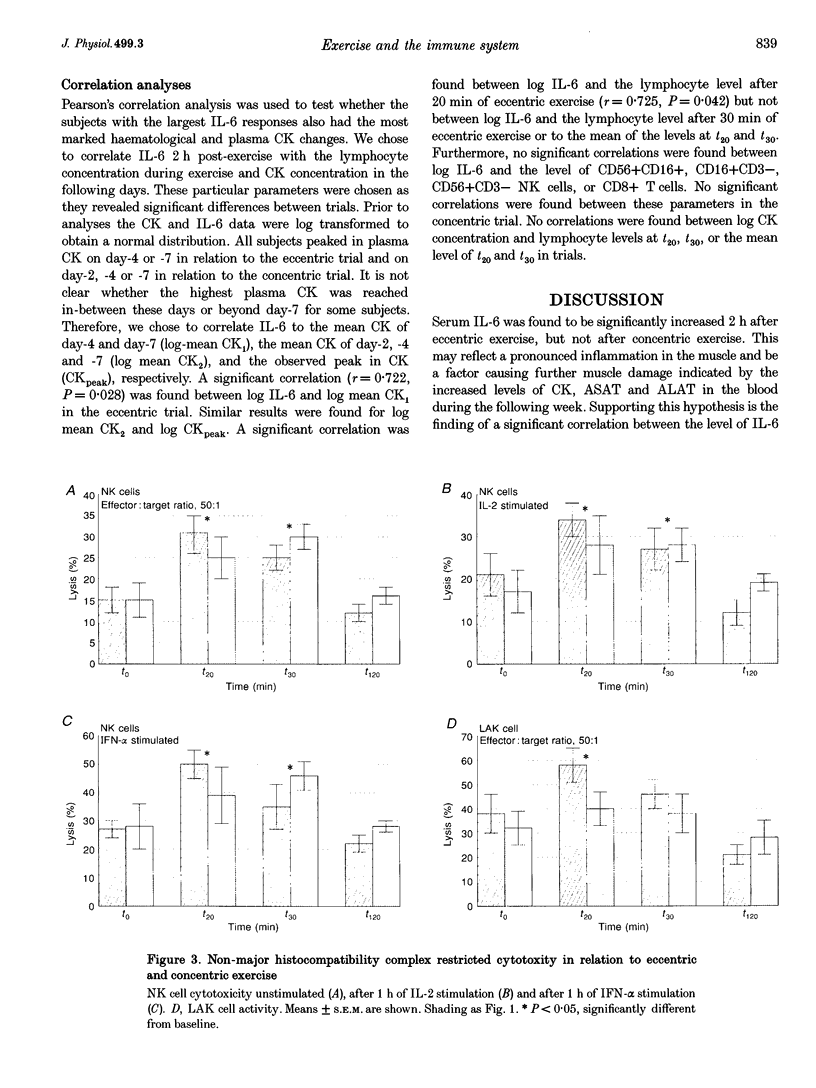
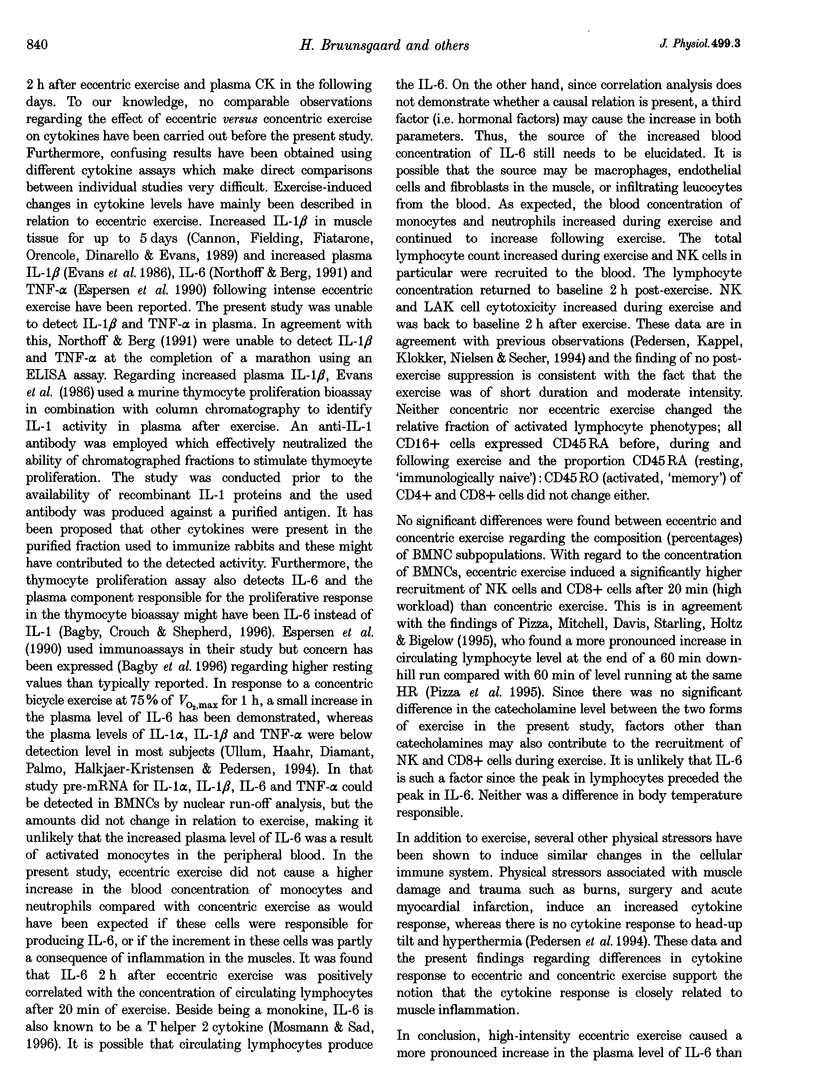
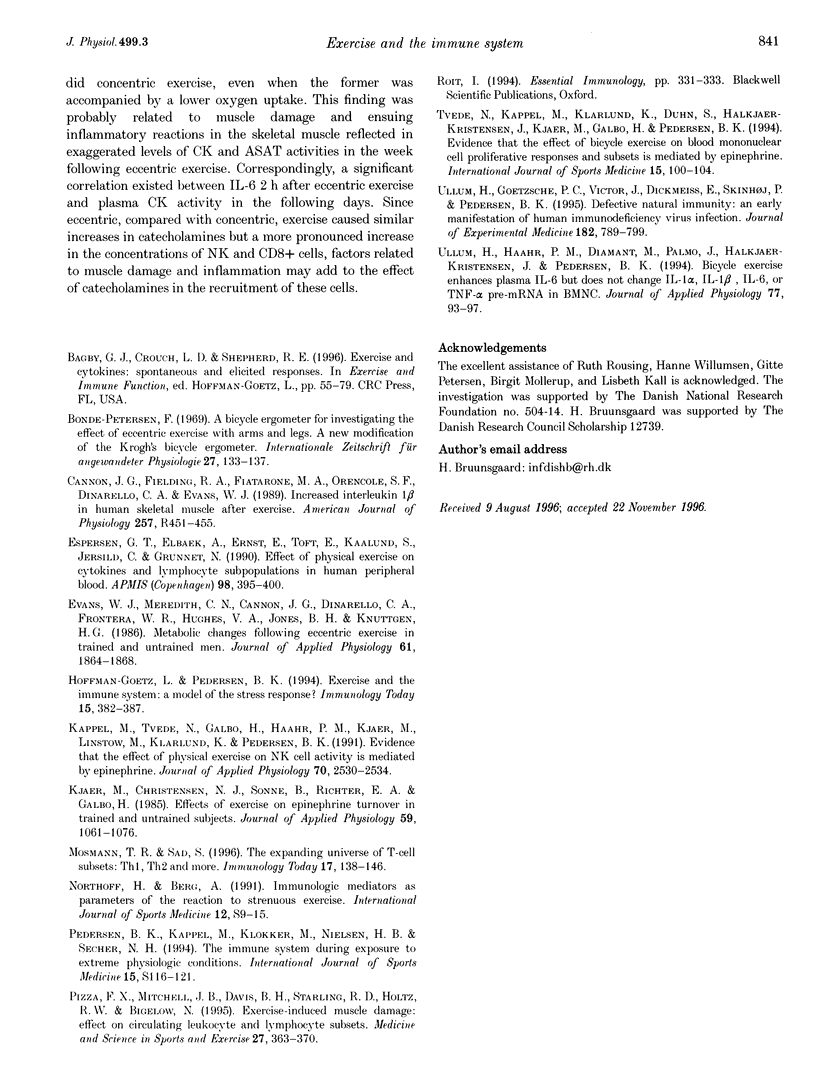
Selected References
These references are in PubMed. This may not be the complete list of references from this article.
- Espersen G. T., Elbaek A., Ernst E., Toft E., Kaalund S., Jersild C., Grunnet N. Effect of physical exercise on cytokines and lymphocyte subpopulations in human peripheral blood. APMIS. 1990 May;98(5):395–400. doi: 10.1111/j.1699-0463.1990.tb01049.x. [DOI] [PubMed] [Google Scholar]
- Hoffman-Goetz L., Pedersen B. K. Exercise and the immune system: a model of the stress response? Immunol Today. 1994 Aug;15(8):382–387. doi: 10.1016/0167-5699(94)90177-5. [DOI] [PubMed] [Google Scholar]
- Kappel M., Tvede N., Galbo H., Haahr P. M., Kjaer M., Linstow M., Klarlund K., Pedersen B. K. Evidence that the effect of physical exercise on NK cell activity is mediated by epinephrine. J Appl Physiol (1985) 1991 Jun;70(6):2530–2534. doi: 10.1152/jappl.1991.70.6.2530. [DOI] [PubMed] [Google Scholar]
- Kjaer M., Christensen N. J., Sonne B., Richter E. A., Galbo H. Effect of exercise on epinephrine turnover in trained and untrained male subjects. J Appl Physiol (1985) 1985 Oct;59(4):1061–1067. doi: 10.1152/jappl.1985.59.4.1061. [DOI] [PubMed] [Google Scholar]
- Northoff H., Berg A. Immunologic mediators as parameters of the reaction to strenuous exercise. Int J Sports Med. 1991 Jun;12 (Suppl 1):S9–15. doi: 10.1055/s-2007-1024743. [DOI] [PubMed] [Google Scholar]
- Petersen F. B. A bicycle ergometer for investigating the effect of eccentric exercise with arms and legs. A new modification of the Krogh's bicycle ergometer. Int Z Angew Physiol. 1969;27(2):133–137. doi: 10.1007/BF00697926. [DOI] [PubMed] [Google Scholar]
- Pizza F. X., Mitchell J. B., Davis B. H., Starling R. D., Holtz R. W., Bigelow N. Exercise-induced muscle damage: effect on circulating leukocyte and lymphocyte subsets. Med Sci Sports Exerc. 1995 Mar;27(3):363–370. [PubMed] [Google Scholar]
- Tvede N., Kappel M., Klarlund K., Duhn S., Halkjaer-Kristensen J., Kjaer M., Galbo H., Pedersen B. K. Evidence that the effect of bicycle exercise on blood mononuclear cell proliferative responses and subsets is mediated by epinephrine. Int J Sports Med. 1994 Feb;15(2):100–104. doi: 10.1055/s-2007-1021028. [DOI] [PubMed] [Google Scholar]
- Ullum H., Haahr P. M., Diamant M., Palmø J., Halkjaer-Kristensen J., Pedersen B. K. Bicycle exercise enhances plasma IL-6 but does not change IL-1 alpha, IL-1 beta, IL-6, or TNF-alpha pre-mRNA in BMNC. J Appl Physiol (1985) 1994 Jul;77(1):93–97. doi: 10.1152/jappl.1994.77.1.93. [DOI] [PubMed] [Google Scholar]


